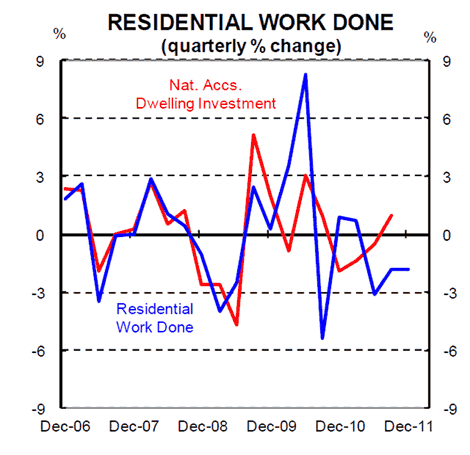Residential construction down 1.8% in December quarter led by drop in WA activity: ABS
Residential construction activity fell 1.8% in the final quarter of 2011 to be 6% lower than a year ago, according to the latest data from the ABS.
Overall construction work done fell by 4.6% in the December quarter after surging 11.7% in the September quarter.
This was mainly the result of a 24.4% decline – expected to be temporary – in construction work done in WA. Construction in WA rose by 45% in the previous quarter.
“We are not of the view that WA’s engineering construction boom is over. Recent project announcements for the expansion of iron ore projects are but one example pointing to the opposite,” says CBA economist James McIntyre.
Commercial building work done fell by 7% in the December quarter while engineering work done fell by 5%.
The drop in overall construction activity will drag on economic growth, with the Commonwealth Bank trimming its GDP forecast slightly as result of the latest figures.
The CBA had forecast annual GDP growth of 3.25% for 2012.
“Construction work done provides a guide to the likely contribution to GDP from residential and non-residential (commercial and engineering) construction activity,” says McIntyre.
Click to enlargeMaster Builders Australia (MBA) chief economist Peter Jones says the fall in building and construction work done in the December quarter is consistent with reports of poor industry conditions.
“With major parts of the industry caught in the slow lane of the two speed economy, the RBA needs to cut rates further,” says Jones.
“[December] figures confirm evidence from Master Builders’ latest survey showing builders expect industry activity to fall as trading conditions and profitability weaken.
“The ABS release shows that building work yet to be done and in the ‘pipeline’ suffered a sharp decline in the December quarter, in line with Master Builders’ information that builders are suffering a downturn in sales and enquiries.
“There is no indication that the negative growth trend firmly established in both the residential and commercial building sectors will turn around without further policy change,” says Jones.
